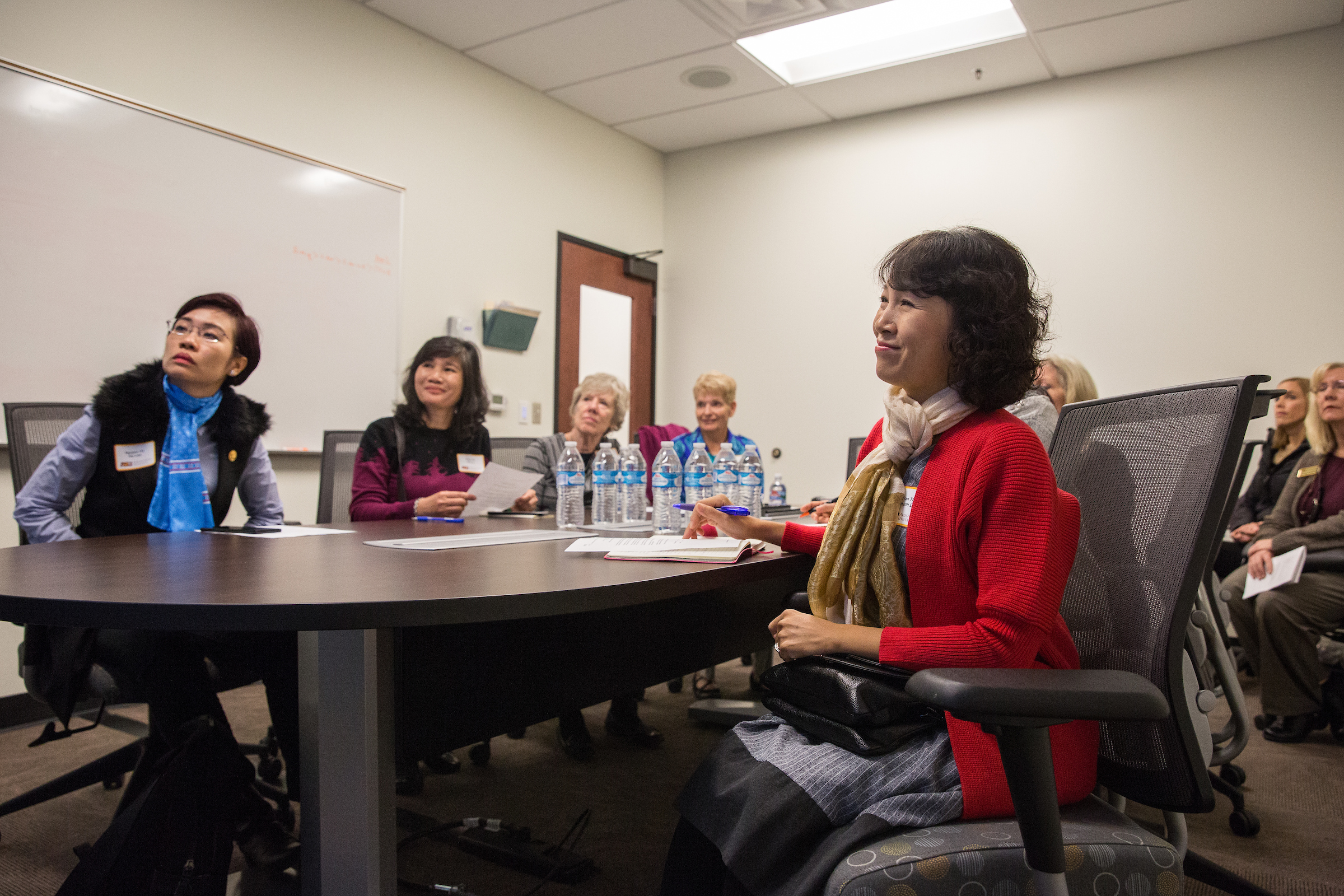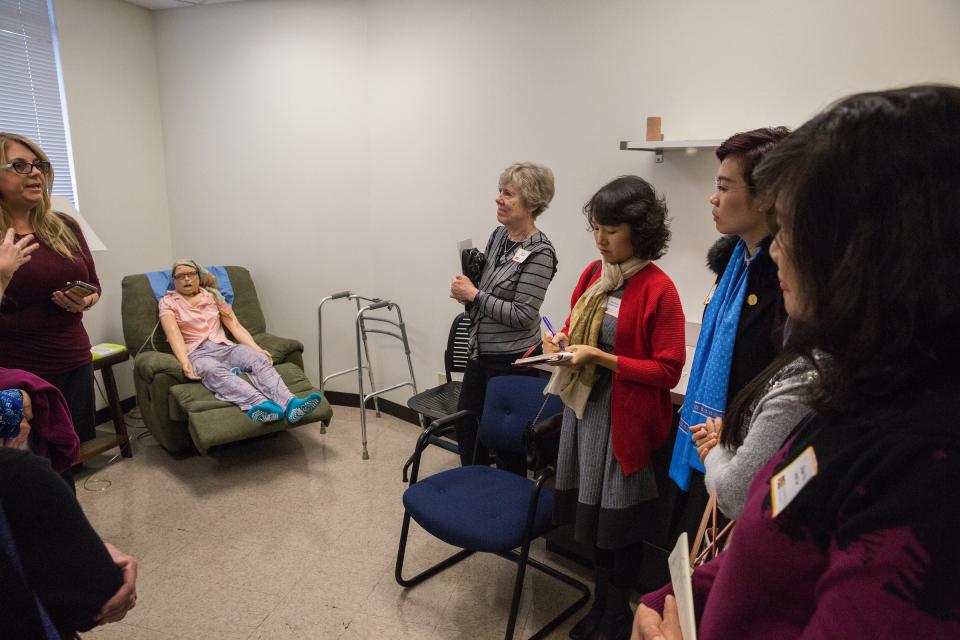
ASU College of Nursing and Health Innovation hosts international guests
By
—
This week Arizona State University's College of Nursing and Health Innovation welcomed some high profile international guests from the nursing department at the University of Medicine and Pharmacy (UMP) in Ho Chi Minh City, Vietnam.
The group, which included the head of the nursing department and professors, made the more than 8,000-mile journey to the Valley of the Sun to get an up-close look at all things health-care education, including the innovative teaching methods used at ASU.
“Vietnam is a developing country so we need to expand and improve a lot in nursing and we would like to see the health-care system (in Vietnam) evolve so that nursing is an important member in the health care systems,” said Tran Thuy Khanh Linh, dean of the UMP nursing department. “These observations and this trip is very helpful for us so that we can learn from ASU and we hope that we can implement (at least) part of it.”
On Wednesday the group arrived on the Downtown Phoenix campus and was greeted by Dean Teri Pipe before setting out on a full day of exploring the facilities, meeting faculty and learning more about the unique program offerings.

First up was the recently expanded, state-of-the-art simulation and learning resources lab. After a tour, the group observed students in action from a debrief room, so as not to disturb the learning experience.
“The technology is very impressive, I know that simulation scenarios are very important and that strategy for teaching and learning is very helpful for students,” Khanh Linh said. “My observation is that these students are very excellent.”
In addition to getting an up close look at an evidenced-based curriculum in action, the delegation from UMP was very interested in seeing how the college’s online programs work. Currently they do not have any online course options.
“Online can reduce time, can reduce cost and provide more convenience for people. We need to prepare BSN nurses in the near future so this online concept is very important,” Khanh Linh said.

Heidi Sanborn, clinical assistant professor and interim director of the RN-BSN and Concurrent Enrollment Program (CEP) in the College walked them through how online education works at ASU.
The group also got a chance to examine the online course structure and the design that goes into making these programs engaging, user friendly and therefore successful.
The day ended with a discussion about different teaching methods.
This was their first trip the College of Nursing and Health Innovation and ASU. It came about thanks to a connection several faculty members have with the nonprofit Vital Links for Humanity.
Former faculty member Roxena Wotring and current adjunct faculty member Nancy Spahr are are among them.
“Our organization has been working for several years with the school of nursing in Ho Chi Minh City, Vietnam, spending time with the faculty to try to grow and develop their program,” Spahr said.
Wotring, who taught at the College of Nursing and Health Innovation for 14 years before retiring, first visited Vietnam with two other ASU faculty members 10 years ago and they’ve been going every year since, teaching at UMP and other local hospitals.
“They have been very eager to learn about nursing education in the United States, from incorporating evidence-based practice, to quality assurance and just generally what our classes look like,” Wotring said.
Part of the goal of the visit Wotring said, was to explore opportunities for developing a long term, mutually beneficial relationship between the two institutions as there’s a lot to be learned from each other.
“They recognize as nursing care evolves there’s an opportunity to learn or see how other systems adapt and they’re interested to see how others are meeting these challenges and there’s a lot our faculty and students can learn from their methods and ingenuity,” Wotring said.
